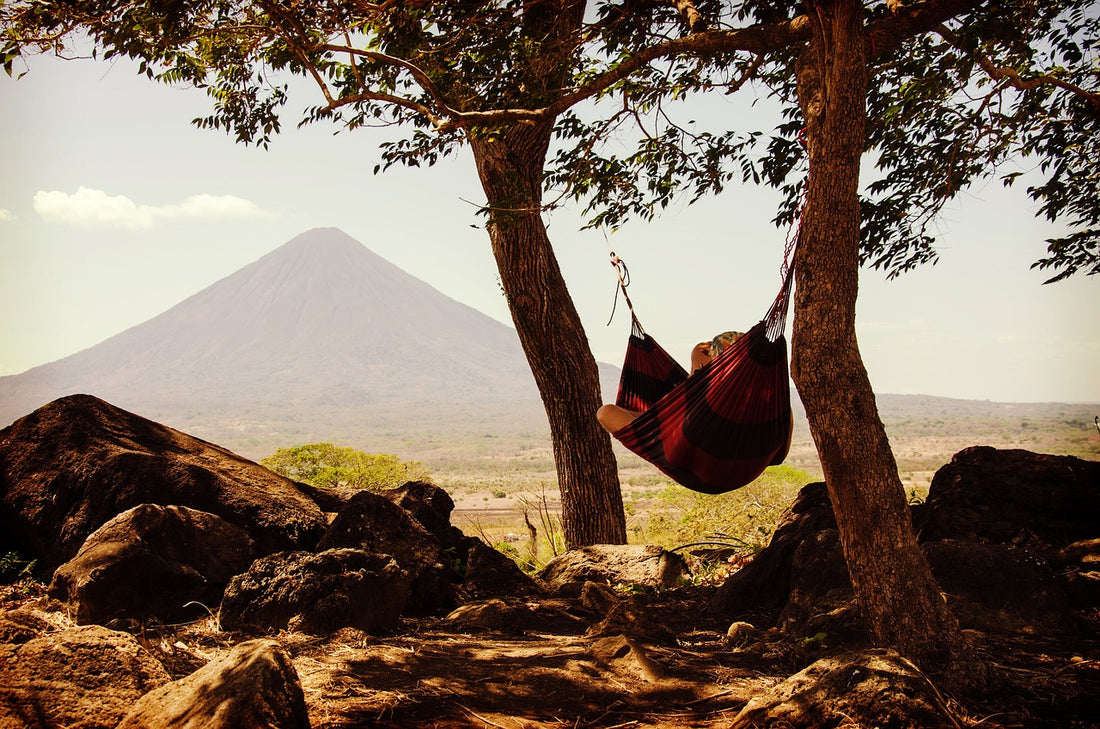
How to Camp Without a Tent
Share
Camping is a cherished activity that allows us to disconnect from the hustle and bustle of everyday life and reconnect with nature. However, sometimes, despite our best efforts, we may find ourselves without essential gear, such as a tent.
While it may initially seem like a setback, camping without a tent can actually lead to a unique and memorable experience, immersing you more fully in the natural world. How to make the most of camping without a tent? How to better embrace the wilderness and enjoying the freedom without .
1. Finding Shelter
The first step in camping without a tent is finding suitable shelter alternatives. Look around for natural features that can provide protection from the elements, such as caves, rock formations, or dense tree canopies. These natural shelters can offer a sense of security while allowing you to experience the raw beauty of your surroundings.
If natural shelters are not available, consider creating your own using lightweight and portable gear. A tarp or camping hammock can serve as makeshift shelters when properly secured between trees or using trekking poles. Be sure to pitch your tarp or hammock securely to withstand wind and rain, and use additional items like rocks or branches to anchor them firmly in place.
2. Sleeping Comfortably
Even without a tent, it's essential to ensure a comfortable and restful night's sleep. Invest in a high-quality sleeping bag designed for the expected weather conditions, along with a sleeping pad or insulated mat to provide cushioning and insulation from the ground. Place your sleeping pad on a flat and level surface to maximize comfort and warmth.
If you're using a hammock for sleeping, choose one with an integrated bug net to protect yourself from mosquitoes and other insects. Additionally, consider bringing along a small pillow or using a stuff sack filled with clothes to support your head and neck while sleeping.
3. Embracing the Elements
One of the most rewarding aspects of camping without a tent is immersing yourself in the elements and experiencing nature in its purest form. Embrace the sounds of the wind rustling through the trees, the scent of the earth after a rain shower, and the sight of the stars twinkling overhead. Without the barrier of a tent, you can fully appreciate the sights, sounds, and sensations of the natural world around you.
However, it's essential to be prepared for changes in weather and temperature. Check the weather forecast before your trip and pack accordingly, including extra layers of clothing, rain gear, and a warm hat for colder nights. Stay vigilant and adaptable, adjusting your plans as needed to ensure your safety and comfort in the wilderness.
4. Campfire Considerations
A campfire can serve as a focal point for your camping experience, providing warmth, light, and a sense of camaraderie among fellow campers. If you're planning to have a campfire, follow all local regulations and guidelines regarding fire safety. Choose a suitable location for your fire pit, away from overhanging branches, dry vegetation, and other flammable materials.
Gather firewood responsibly, using only dead and downed wood found on the ground. Avoid cutting or damaging live trees and vegetation, as this can harm the ecosystem. Once your fire is lit, maintain a safe distance and never leave it unattended. When extinguishing your fire, use water to ensure it is fully extinguished before leaving the area.
5. Navigating at Night
Without the interior lighting of a tent, navigating your campsite at night can present some challenges. Pack a reliable headlamp or flashlight to illuminate your path and make tasks such as cooking, gathering firewood, or visiting the bathroom more manageable. Keep your light source easily accessible, either by wearing it around your head or attaching it to your clothing.
Take extra care when moving around your campsite in the dark, watching out for obstacles such as tree roots, rocks, and uneven terrain. Consider marking important landmarks or pathways with reflective tape or glow sticks to help you find your way back to your shelter after dark.
6. Leaving No Trace
As with any camping trip, it's essential to minimize your impact on the environment and leave no trace of your presence behind. Pack out all trash and waste, including food scraps, packaging, and hygiene products. Practice proper waste disposal techniques, such as burying human waste in a cathole dug at least 6 to 8 inches deep and 200 feet away from water sources, trails, and campsites.
Respect wildlife and their natural habitats by observing from a safe distance and avoiding actions that could disturb or harm them. Keep food stored securely in bear-proof containers or hung from a tree branch to prevent attracting unwanted attention from wildlife.
Camping without a tent offers a unique opportunity to connect more deeply with nature, immersing yourself in the sights, sounds, and sensations of the wilderness. By finding suitable shelter alternatives, sleeping comfortably, embracing the elements, practicing fire safety, navigating at night, and leaving no trace, you can enjoy a memorable camping experience without the need for a tent. So, the next time you find yourself without a tent, embrace the adventure and explore the wonders of camping without boundaries.
